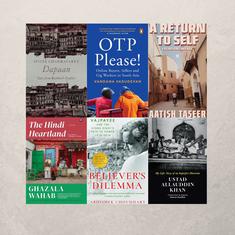On August 7, 1974, Philippe Petit walked a tightrope wire between the World Trade Center towers.
This is the only historical fact in Colum McCann’s Let The Great World Spin.
A hush descends on the gathered crowd. They are willing him to put one foot in front of the other, to reach the other tower. Or are they? “But only a minute ago, no matter what they said, they really wanted to witness a quiet fall, see someone arc downward all that distance… flail, smash to the ground, and give the Wednesday an electricity, a meaning.”
We are blindsided by the author’s willingness to acknowledge hard truths, to confront our falseness, our hypocrisy. We are not alone, the author is saying, we are not alone in our shame, in our vulnerabilities, in our ugly edges, in our secrets, the strange, inexplicable stirrings of our heart. The author promises to take us along on a journey, we will go with him to the ends of the earth, we will walk the tightrope with him, and we will follow the lives of the characters to the end.
The tightrope winds itself through all the characters in the book. Their lives and deaths all intersect in surprising, but inevitable ways.
The scene shifts briefly to Dublin. Here we meet John Corrigan and his brother Ciaran. John, referred to as Corrigan throughout the book gives away his blankets and his pennies and his absent father’s clothes to drunks and gets drunk himself. He becomes a Jesuit and moves to New York to The South Bronx in the early 70’s. Graffiti festoons the walls of the housing project where he lives, and broken glass litters the paths and steps. The place smells of puke and piss and hash smoke. The image of the hooker we encounter in this desolate, desperate neighbourhood is etched like no other: “…every time a car went past she lowered and raised the parasol, making herself into a planet of light and dark.”
We don’t meet her formally until later in the book, but she is Tillie, the Rumi-spouting prostitute. Her seventeen- or eighteen-year-old daughter, Jazzlyn “looks like some failed sunflower.” Corrigan is in love with Adelita, a Guatemalan nurse, whose “face looked like it came from a Spanish mosaic.” A priest, sworn to celibacy, he rages: “How much might he hate his God if he left her behind? How might he detest himself if he stuck to his Lord?”
Corrigan is driving Jazzlyn back home from a court appearance when their run-down van plastered with peace signs is clipped in the back by a car driven by a man high on cocaine. The man’s wife, Lara, is haunted by Jazzlyn’s terrible death. She manages to find out the dead girl’s identity and goes to the funeral where she meets Ciaran, the dead man’s brother. Ciaran knows in his bones that she had something to do with his beloved brother’s death.
Across town, in a swank Park Avenue apartment we meet Claire and her husband Solomon Soderberg, the judge. Among his cases later that day are two felony charges, one against Tillie and one against Jazzlyn. Tillie is arraigned, but her daughter is let off. Corrigan is driving her home when they meet with the accident and perish.
Claire is grieving for her only child, Joshua, dead not long ago in Vietnam. She is waiting for four women to arrive, each of whom has lost a child, or three to the war. As she recalls events from her son’s short life, she finds herself thinking that “the simple things come back to us. They rest for a moment by our ribcages then suddenly reach in and twist our hearts a notch backward.”
In the meantime her guests are making their way up to her apartment. One of them, Marcia, is telling the others about the tightrope walker. She spotted him from the ferry on her way here. They are breathless with excitement, dread and bitterness.
The author lists eighty three kinds of death here, “a stupid, endless menu of death.” But death by tightrope is cheapening death. How dare he throw his life in everyone’s face?
Gloria, a member of the support group has lost three boys in the war. She lives in the same building as Corrigan and Ciaran. As Jazzlyn and Janice, Jazzlyn’s small children are being led away by stony-faced social workers, she decides to look after them.
I quote Gloria’s reflection on love: “Some people think love is the end of the road, and if you’re lucky enough to find it, you stay there. Other people say it just becomes a cliff you drive off, but most people who’ve been around awhile know it’s just a thing that changes day by day, and depending on how much you fight for it, you get it, or you hold on to it, or you lose it, but sometimes it’s never even there in the first place.”
Little Jazzlyn grows up, becoming Jaslyn. She visits Ciaran in Dublin. He is now married to Lara and lives in his childhood home, the same place where the brothers had grown up. Lara has the bluest eyes, Jaslyn observes, “they looked like small drops of September sky.”
The last scene in the book finds Jaslyn visiting Claire, who is dying. She fixes a pillow, leans, and picks a hair out of Claire’s mouth.
She lies on the bed next to Claire.
“The world spins. We stumble on. It is enough.”
A lifelong reader and writer, Debika Lahiri has written a novel. She conducts nature walks in Delhi's gardens and parks.










